usMany of our students ask, “How do I make time to study and complete homework?” These students are understandably overwhelmed: Classes take up 35 hours a week. Most students also balance hours of sports, extracurricular activities, home lives, and work responsibilities. Making time between these commitments for additional schoolwork is challenging for some students. No wonder so many students seek help developing work-study habits such as scheduling and keeping up with assignment due dates.
When my students ask me this question, I take my answer directly from my own experience. As an adult living with ADHD, I find online calendar apps and sites that save your events to the cloud to be a lifesaver. These programs are often included in school-assigned emails or student portals. Any application or website that allows you to create your own events and reminders can help balance your schedule. I will use Google Calendar to demonstrate this practice, because its view of daily and weekly schedules allows for an easy visual with which to spot gaps and conflicts.
Lesson 1: Avoiding Conflicts
The first step to using these calendars to their maximum potential is to ensure that the calendar can accurately depict the events in your life. This means entering the largest and least flexible events in your day-to-day schedule into the calendar. Some users feel that they will remember that they have class for seven hours every day, but entering those times is crucial to avoiding conflicts. Please see the picture below for an example:
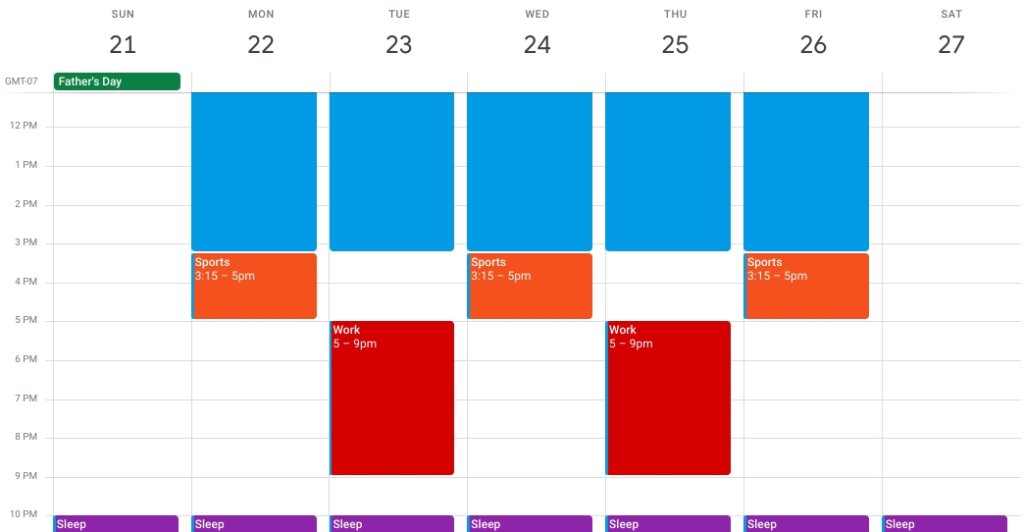
This student has school every day and works twice weekly, entered respectively in blue and red blocks. By entering these fixed commitments on your calendar, you visually approximate how much free time you have to schedule your studying. These dependable events are also helpful because they include the time it takes to commute to and from them. This keeps you from scheduling events on top of each other, giving you no time to go from one to the other. It is also important for students in their teenage years to schedule sleep. This student has 73 free hours if we include the 16 over the weekend.
Assuming that this student needs an hour every week to complete the homework from one class, this student has at most 6 hours of homework a week. This is a low estimate, and additional time will be spent studying on more elaborate projects, so we’ve rounded this number up to 10 hours per week for homework/studying. Considering time is needed for family, socialization, and life in general, the following sample study event plan is one of many configurations that fit into this sample schedule:
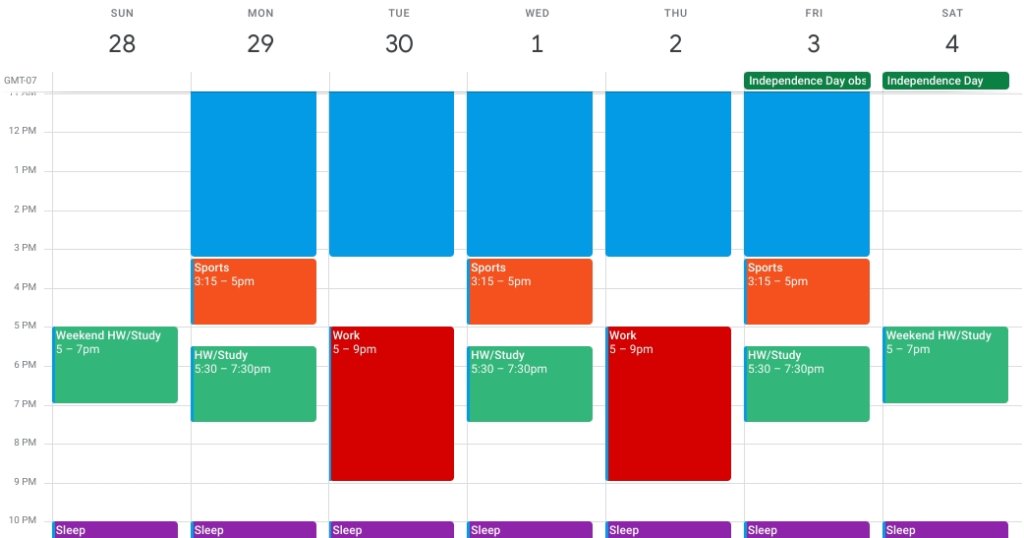
Lesson 2: Stay Reactive by Rescheduling on the Fly
This schedule has a repetitive feature, in that it occurs at a relatively same time everyday, allowing the student to be more intellectually prepared to work at these times. However, different students may need study times that occur at different times each day, to fit their schedule or work habits. But what if such an event were to come up during a previously scheduled homework/study block? Check the image below for an example:
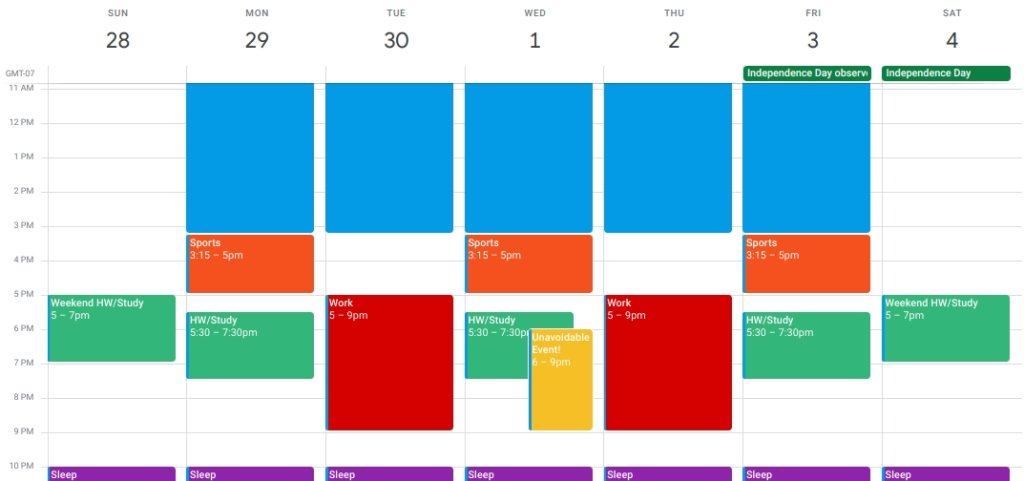
This unavoidable event, printed in yellow, will consume an hour and a half of study and homework time. The work must be done by Wednesday, so this time needs to be offset before the event. Offset study time carefully to avoid overwhelming yourself with too many tasks without breaks. Also, consider any events or routines that haven’t yet been added to the calendar. When scheduling the offset, it’s crucial to ensure that online calendars reflect your actual commitments. For example, you can offset time by adding half an hour to Monday’s session and an hour to Tuesday before work.:
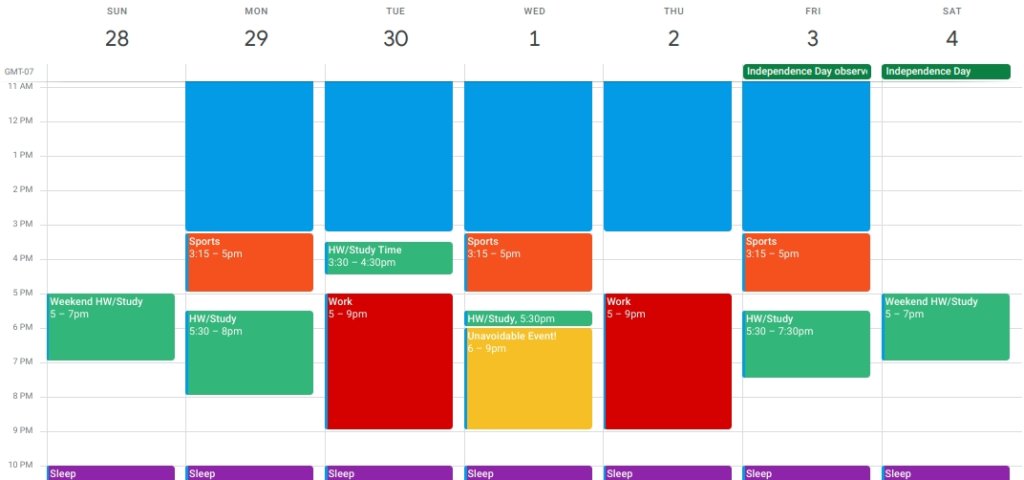
Lesson 3: Use Reminders to Meet Due Dates
One of the most widespread struggles among students asking for help developing their study skills is meeting due dates. Due dates give us a specific time by which we must complete work. They don’t tell us how to allocate time to complete a project. Complicating this, the more tasks we put into the forefront of our minds, the harder it is to focus. Calendars are designed to help us juggle our commitments. Reminders can help you judge the time needed to complete a project. You can then allocate a projected portion of homework and study time to devote to the project. Working on projects well before due dates allows you to manage projects that take longer than expected. This also helps you adapt to events scheduled on top of other activities. Please refer to this example reminder presented in a monthly view of the calendar:

You can see that this student has nine days and 12 hours to complete this project. The next step, assigning work time to the project, is tricky. Every assignment is different, and every student requires a different time frame to work. Only by reflecting on their previous experience with similar projects can a student guestimate the time the project will require. Let us say that this student thinks the example project will take 4 hours. Here is a possible division of that time among available timeslots:
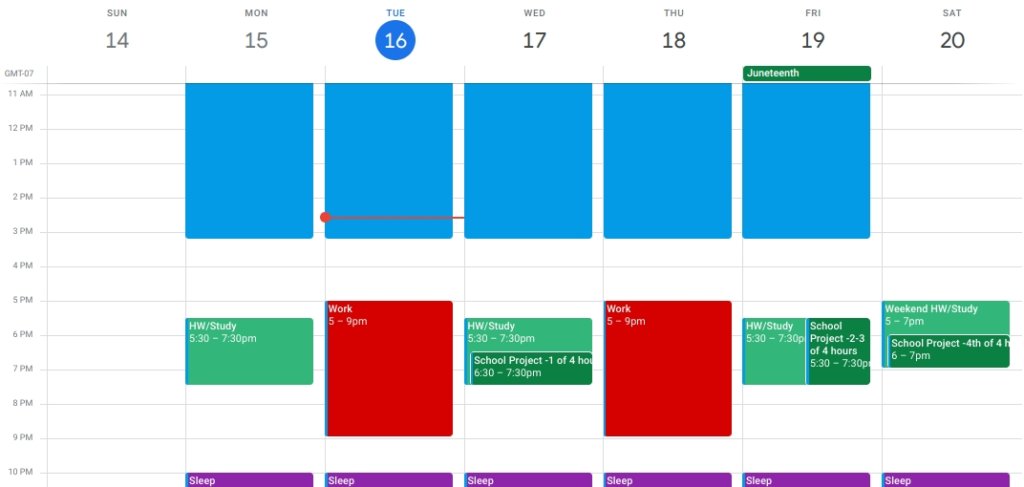
And there you have it! For more lessons on study skills, please call or email AJ Tutoring. We will place you with a tutor to help you further your studies.

